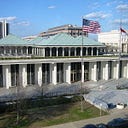WUNC Accuses a Lottery Ball Machine of Gerrymandering
WUNC reporter: State Senate “district lines are still gerrymandered”
Reality: District lines were drawn without political data by a Dem mapmaker’s computer algorithm then chosen at random by a lottery ball machine
Raleigh, N.C. — A WUNC reporter today accused the North Carolina Senate of drawing gerrymandered district maps for the 2020 election, even though the maps were drawn by a computer algorithm created by a Univ. of Michigan professor and the configurations were selected at random by a lottery ball machine.
Sen. Ralph Hise (R-Mitchell) said, “Do reporters really think a Democratic Party mapmaker’s computer algorithm and a lottery ball machine conspired to draw gerrymandered districts? When will this lunacy end?”
The reporter went on to reference a discredited theory of “wasted votes,” also known as the “efficiency gap,” to support his conclusion that a computer algorithm and a lottery ball machine effectuated a partisan gerrymander.
Georgetown professor Christopher Chambers best outlined the flaws of efficiency gap theory in this paper:
- “The ranking produced by the efficiency gap does not make sense in even the simplest of settings.”
- “The efficiency gap is neither a cure to the malady of partisan gerrymandering nor even a good idea.”
And here’s another takedown that appears in The Atlantic: Efficiency gap theory “has serious, perhaps insurmountable flaws.”
The Atlantic authors conclude, “The danger isn’t the efficiency gap itself, but rather the temptation to look only at the efficiency gap, and make it the effective definition of partisan gerrymandering in the future. As Duchin and her colleague Mira Bernstein recently wrote, ‘a famous formula can take on a life of its own and this one will need to be watched closely.’”
Indeed.
Of course, the only way to achieve zero “wasted votes” is to consider partisan data in redistricting, which sounds an awful lot like partisan gerrymandering.
